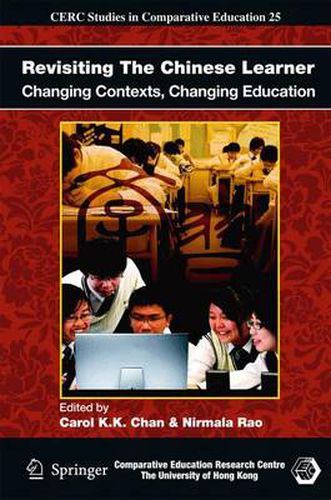Readings Newsletter
Become a Readings Member to make your shopping experience even easier.
Sign in or sign up for free!
You’re not far away from qualifying for FREE standard shipping within Australia
You’ve qualified for FREE standard shipping within Australia
The cart is loading…






This title is printed to order. This book may have been self-published. If so, we cannot guarantee the quality of the content. In the main most books will have gone through the editing process however some may not. We therefore suggest that you be aware of this before ordering this book. If in doubt check either the author or publisher’s details as we are unable to accept any returns unless they are faulty. Please contact us if you have any questions.
It is seventeen years since I first formulated ‘The paradox of the Chinese learner’ in a conference in Kathmandu, Nepal. My original formulation of the paradox was that westerners saw Chinese students as rote learning massive amounts of information in fierce exam-dominated classrooms - yet in international comparisons, students in the Confucian heritage cla- rooms greatly outperformed western students learning in ‘progressive’ western classrooms. This seeming paradox raised all sorts of questions to which many others have contributed important answers, especially that by Ference Marton on how Chinese learners construed the roles of memory and understanding in ways that were foreign to typical western educators. Much of this work was brought together in The Chinese Learner (1996), edited by David Watkins and myself. That work raised more questions still, especially about educational contexts, beliefs and practices, which were investigated in contributions to Teaching the Chinese Learner (2001). And now we have Revisiting the Chinese Learner, which is a very timely collection of excellent contributions that take into account the many changes that have taken place since 2001, changes such as: 1. The globalisation of education especially through educational technology, and enormous socio-economic changes, especially in China itself. 2. Changes in educational policy, aims, curriculum and organi- tion, and decentralisation of educational decision-making in many Confucian heritage cultures. 3.
$9.00 standard shipping within Australia
FREE standard shipping within Australia for orders over $100.00
Express & International shipping calculated at checkout
This title is printed to order. This book may have been self-published. If so, we cannot guarantee the quality of the content. In the main most books will have gone through the editing process however some may not. We therefore suggest that you be aware of this before ordering this book. If in doubt check either the author or publisher’s details as we are unable to accept any returns unless they are faulty. Please contact us if you have any questions.
It is seventeen years since I first formulated ‘The paradox of the Chinese learner’ in a conference in Kathmandu, Nepal. My original formulation of the paradox was that westerners saw Chinese students as rote learning massive amounts of information in fierce exam-dominated classrooms - yet in international comparisons, students in the Confucian heritage cla- rooms greatly outperformed western students learning in ‘progressive’ western classrooms. This seeming paradox raised all sorts of questions to which many others have contributed important answers, especially that by Ference Marton on how Chinese learners construed the roles of memory and understanding in ways that were foreign to typical western educators. Much of this work was brought together in The Chinese Learner (1996), edited by David Watkins and myself. That work raised more questions still, especially about educational contexts, beliefs and practices, which were investigated in contributions to Teaching the Chinese Learner (2001). And now we have Revisiting the Chinese Learner, which is a very timely collection of excellent contributions that take into account the many changes that have taken place since 2001, changes such as: 1. The globalisation of education especially through educational technology, and enormous socio-economic changes, especially in China itself. 2. Changes in educational policy, aims, curriculum and organi- tion, and decentralisation of educational decision-making in many Confucian heritage cultures. 3.